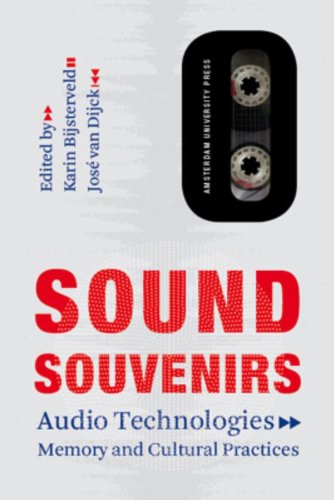Paul D. Miller, aka DJ Spooky That Subliminal Kid: Rhythm Science (2004)
Filed under pamphlet | Tags: · code, language, memory, music, myth, networks, remix, sound recording, technology

“Once you get into the flow of things, you’re always haunted by the way that things could have turned out. This outcome, that conclusion. You get my drift. The uncertainty is what holds the story together, and that’s what I’m going to talk about.”
—Rhythm Science
The conceptual artist Paul Miller, also known as Dj Spooky that Subliminal Kid, delivers a manifesto for rhythm science—the creation of art from the flow of patterns in sound and culture, “the changing same.” Taking the Dj’s mix as template, he describes how the artist, navigating the innumerable ways to arrange the mix of cultural ideas and objects that bombard us, uses technology and art to create something new and expressive and endlessly variable. Technology provides the method and model; information on the web, like the elements of a mix, doesn’t stay in one place. And technology is the medium, bridging the artist’s consciousness and the outside world.
Miller constructed his Dj Spooky persona (“spooky” from the eerie sounds of hip-hop, techno, ambient, and the other music that he plays) as a conceptual art project, but then came to see it as the opportunity for “coding a generative syntax for new languages of creativity.” For example: “Start with the inspiration of George Herriman’s Krazy Kat comic strip. Make a track invoking his absurd landscapes… What do tons and tons of air pressure moving in the atmosphere sound like? Make music that acts a metaphor for that kind of immersion or density.” Or, for an online “remix” of two works by Marcel Duchamp: “I took a lot of his material written on music and flipped it into a DJ mix of his visual material—with him rhyming!”
Tracing the genealogy of rhythm science, Miller cites sources and influences as varied as Ralph Waldo Emerson (“all minds quote”), Grandmaster Flash, W. E. B Dubois, James Joyce, and Eminem. “The story unfolds while the fragments coalesce,” he writes.
Miller’s textual provocations are designed for maximum visual and tactile seduction by the international studio COMA (Cornelia Blatter and Marcel Hermans). They sustain the book’s motifs of recontextualizing and relayering, texts and images bleed through from page to page, creating what amount to 2.5 dimensional vectors. From its remarkable velvet flesh cover, to the die cut hole through the center of the book, which reveals the colored nub holding in place the included audio CD, Rhythm Science: Excerpts and Allegories from the Sub Rosa Archives, this pamphlet truly lives up to Editorial Director Peter Lunenfeld’s claim that the Mediawork Pamphlets are “theoretical fetish objects . . . ‘zines for grown-ups.”
Publisher MIT Press, 2004
A Mediawork pamphlet
ISBN 026263287X, 9780262632874
128 pages
Hypnotext (Rhythm Science’s webtake by Peter Halley)
publisher
publisher
google books
PDF (no OCR; updated on 2013-1-23)
Comment (0)Karin Bijsterveld, José van Dijck (eds.): Sound Souvenirs: Audio Technologies, Memory and Cultural Practices (2009)
Filed under book | Tags: · archive, memory, sound recording, technology

“In recent decades, the importance of sound for remembering the past and for creating a sense of belonging has been increasingly acknowledged. We keep “sound souvenirs” such as cassette tapes and long play albums in our attics because we want to be able to recreate the music and everyday sounds we once cherished. Artists and ordinary listeners deploy the newest digital audio technologies to recycle past sounds into present tunes. Sound and memory are inextricably intertwined, not just through the commercially exploited nostalgia on oldies radio stations, but through the exchange of valued songs by means of pristine recordings and cultural practices such as collecting, archiving and listing. This book explores several types of cultural practices involving the remembrance and restoration of past sounds. At the same time, it theorizes the cultural meaning of collecting, recycling, reciting, and remembering sound and music.”
Publisher Amsterdam University Press, Amsterdam, 2009
Transformations in Art and Culture series
Creative Commons BY-NC 3.0 License
ISBN 9089641327, 9789089641328
218 pages
PDF, PDF (updated on 2016-7-18)
Comment (0)Peter Krapp: Déjà Vu: Aberrations of Cultural Memory (2004)
Filed under book | Tags: · cultural memory, hypertext, kitsch, mass media, memory, philosophy, psychoanalysis, technology

Referring to a past that never was, déjà vu shares a structure not only with fiction, but also with the ever more sophisticated effects of media technology. Tracing the term from the end of the nineteenth century, when it was first popularized in the pages of the Revue philosophique, Peter Krapp examines the genealogy and history of the singular and unrepeatable experience of déjà vu. This provocative book offers a refreshing counterpoint to the clichid celebrations of cultural memory and forces us do a double take on the sanctimonious warnings against forgetting so common in our time.
Disturbances of cultural memory-screen memories, false recognitions, premonitions-disrupt the comfort zone of memorial culture: strictly speaking, dij vu is neither a failure of memory nor a form of forgetting. Krapp’s analysis of such disturbances in literature, art, and mass media introduces, historicizes, and theorizes what it means to speak of an economy of attention or distraction. Reaching from the early psychoanalytic texts of Sigmund Freud to the plays of Heiner M]ller, this exploration of the effects of dij vu pivots around the work of Walter Benjamin and includes readings of kitsch and aura in Andy Warhol’s work, of cinematic violence and certain exaggerated claims about shooting and cutting, of the memorial character of architecture, and of the high expectations raised by the Internet.
Published by U of Minnesota Press, 2004
ISBN 0816643342, 9780816643349
218 pages

